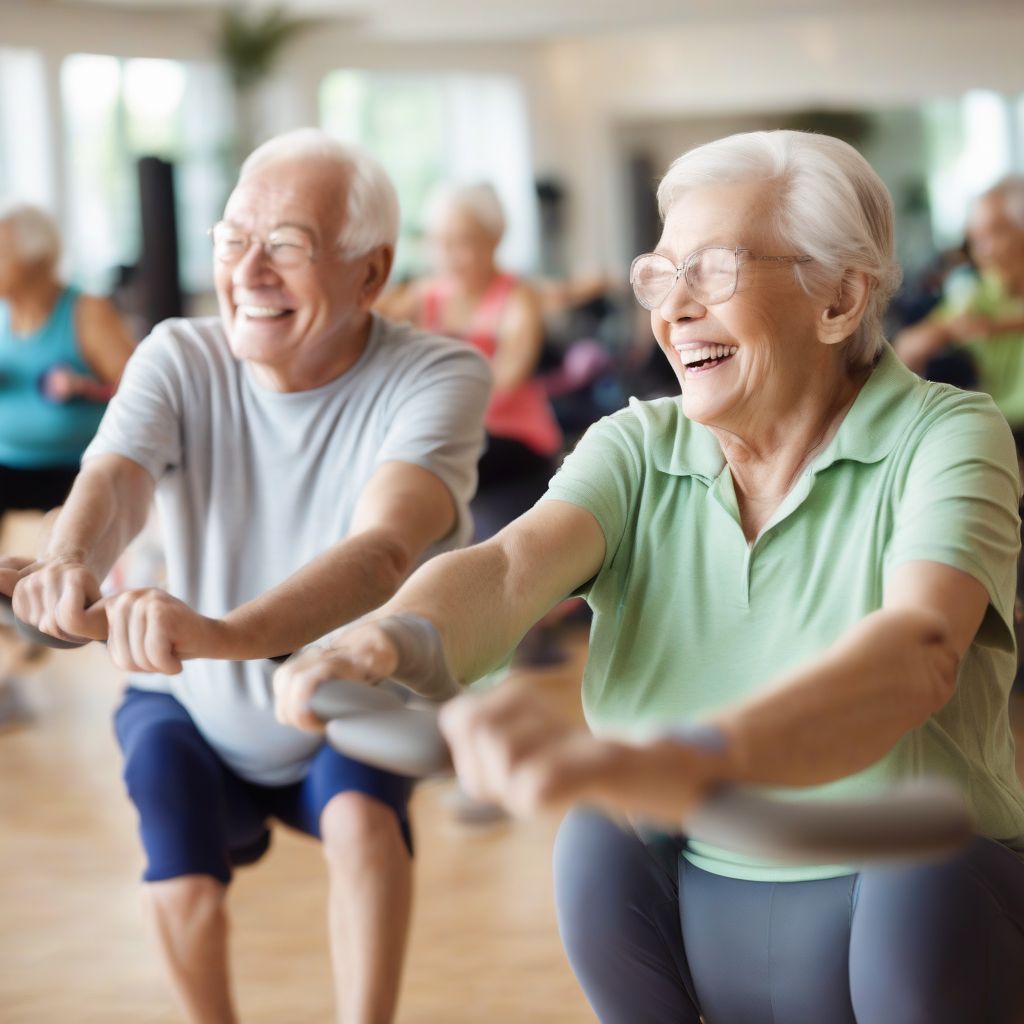Have you ever pictured yourself in your golden years, vibrant and full of energy, enjoying life to the fullest? It’s a dream many of us share, and achieving it is more attainable than you might think. The secret? Prioritizing fitness. Maintaining an active lifestyle plays a pivotal role in aging gracefully, impacting not just our physical health, but our mental and emotional well-being too. Let’s delve into how fitness can empower you to embrace aging with vitality and joy.
The Physical Benefits of Fitness for Seniors
As we age, our bodies naturally undergo changes. Muscle mass decreases, bone density declines, and our joints may become stiffer. Regular exercise can significantly mitigate these effects.
Strength Training: Building a Strong Foundation
Strength training, using weights or resistance bands, helps preserve and even build muscle mass. This is crucial for maintaining independence and performing everyday tasks with ease. Stronger muscles also support our joints, reducing the risk of falls and injuries. Studies have shown that resistance training can improve bone density, lessening the risk of osteoporosis.
Cardiovascular Health: Keeping Your Heart Strong
Aerobic exercise, such as walking, swimming, or cycling, keeps our cardiovascular system healthy. It strengthens the heart, improves blood flow, and helps regulate blood pressure and cholesterol levels. This reduces the risk of heart disease, stroke, and other chronic conditions.
Flexibility and Balance: Enhancing Mobility
Maintaining flexibility and balance is essential for preventing falls and maintaining mobility. Activities like yoga, tai chi, and stretching can improve joint range of motion, enhance balance, and reduce stiffness.
 Elderly Engaging in Fitness Activities
Elderly Engaging in Fitness Activities
The Mental and Emotional Benefits of Fitness in Aging
The benefits of fitness extend far beyond the physical. Exercise has a profound impact on our mental and emotional well-being, particularly as we age.
Boosting Cognitive Function: Sharpening Your Mind
Regular physical activity has been linked to improved cognitive function, including memory, attention, and processing speed. Exercise increases blood flow to the brain, promoting the growth of new brain cells and protecting against age-related cognitive decline.
Combating Depression and Anxiety: Elevating Your Mood
Exercise is a powerful mood booster. It releases endorphins, natural chemicals that have mood-lifting and pain-relieving effects. Studies have shown that regular exercise can be as effective as medication in treating mild to moderate depression and anxiety.
Enhancing Social Interaction: Connecting with Others
Participating in group fitness classes or joining a gym can provide opportunities for social interaction and connection, combating loneliness and isolation, which are common concerns among older adults. Joining a walking group or a dance class can be a fun way to meet new people and stay active. A quote often attributed to fitness professionals emphasizes the importance of connection, “Fitness isn’t just about physical strength, it’s about building a strong community.”
Creating a Sustainable Fitness Routine
Starting or maintaining a fitness routine can feel daunting, especially as we age. Here are a few tips to make it easier:
Consult Your Doctor: Ensuring Safety
Before starting any new exercise program, it’s essential to consult your doctor. They can assess your current health status and recommend activities that are safe and appropriate for you.
Start Slowly and Gradually Increase Intensity: Building a Solid Foundation
Don’t try to do too much too soon. Start with short, low-intensity workouts and gradually increase the duration and intensity as you get stronger. Listening to your body and respecting its limits is crucial.
Find Activities You Enjoy: Making Fitness Fun
The key to sticking with a fitness routine is to find activities you genuinely enjoy. Whether it’s dancing, gardening, swimming, or hiking, there are countless ways to stay active and have fun.
Make it a Social Activity: Building Connections
Working out with a friend or family member can make exercise more enjoyable and keep you motivated.
Nutrition and Fitness: A Powerful Combination
Maintaining a healthy diet is just as important as exercise when it comes to aging gracefully. A balanced diet rich in fruits, vegetables, lean protein, and whole grains provides the nutrients your body needs to stay strong and healthy. As a Registered Dietitian, I often recommend the book “The Longevity Diet” to my clients. It provides valuable insights into the role of nutrition in promoting healthy aging.
 Healthy Meal for Seniors
Healthy Meal for Seniors
Conclusion
Aging gracefully is a journey, not a destination. By embracing fitness as a vital part of our lives, we can enhance our physical and mental well-being, maintain independence, and enjoy our golden years to the fullest. Remember to consult with your doctor before starting any new exercise program, start slowly, find activities you enjoy, and make it a social activity. Don’t wait, start today, and embrace the vibrant, fulfilling life that awaits you! Share your thoughts and experiences in the comments below. What are your favorite ways to stay active? What challenges have you faced, and how have you overcome them? Let’s inspire and support each other on this journey towards graceful aging!



